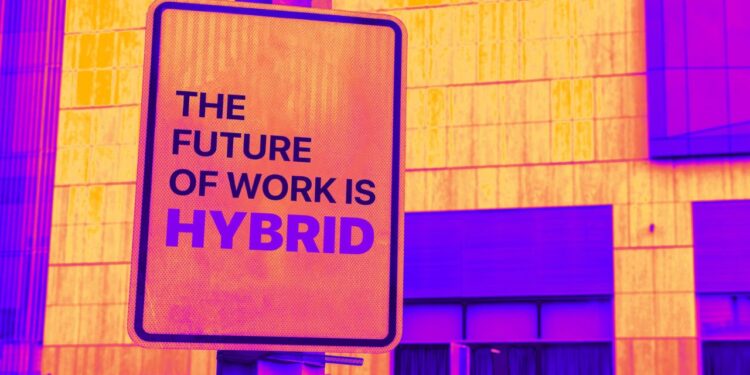What’s going on:
The traditional office is undergoing a redefining transformation with hybrid and remote work models gaining more traction with businesses. According to Stanford economist Nick Bloom, the return-to-office trend has stalled, and the future of work is likely to be a blend of in-person and remote work, according to Business Insider.
In a tweet back in March, Bloom posted his predictions stating that 40% of jobs will be in-person, 50% will be hybrid, and 10% will remain fully remote in the long term. However, Business Insider reports that Bloom’s most recent estimates show 60% working in-person, 30% working in-person between one and four days per week, and 10% remaining fully remote.
He also anticipates an increase in days worked from home from 25% to 40% over the next two decades.
Why it matters:
The widespread adoption of flexible work arrangements is impacting both employees and employers. For employees, it offers more flexibility and career options, which are particularly valuable for skilled workers. For businesses, offering flexibility can expand their talent pool and help leaders attract and retain skilled employees. However, there are concerns about productivity, with some research suggesting that remote work contributes to decreased productivity.
How it’ll impact the future:
As technology continues to improve, remote work opportunities are expected to increase. This widespread adopt could impact changes in office occupancy rates and public transit usage. With fewer people commuting to work every day, it’s possible that office occupancy rates and public transit usage are likely to remain below pre-pandemic levels. These changes could possibly lead to cost savings for businesses, as remote workers would not require office space.


 Dr. Gleb Tsipursky – The Office Whisperer
Dr. Gleb Tsipursky – The Office Whisperer Nirit Cohen – WorkFutures
Nirit Cohen – WorkFutures Angela Howard – Culture Expert
Angela Howard – Culture Expert Drew Jones – Design & Innovation
Drew Jones – Design & Innovation Jonathan Price – CRE & Flex Expert
Jonathan Price – CRE & Flex Expert










